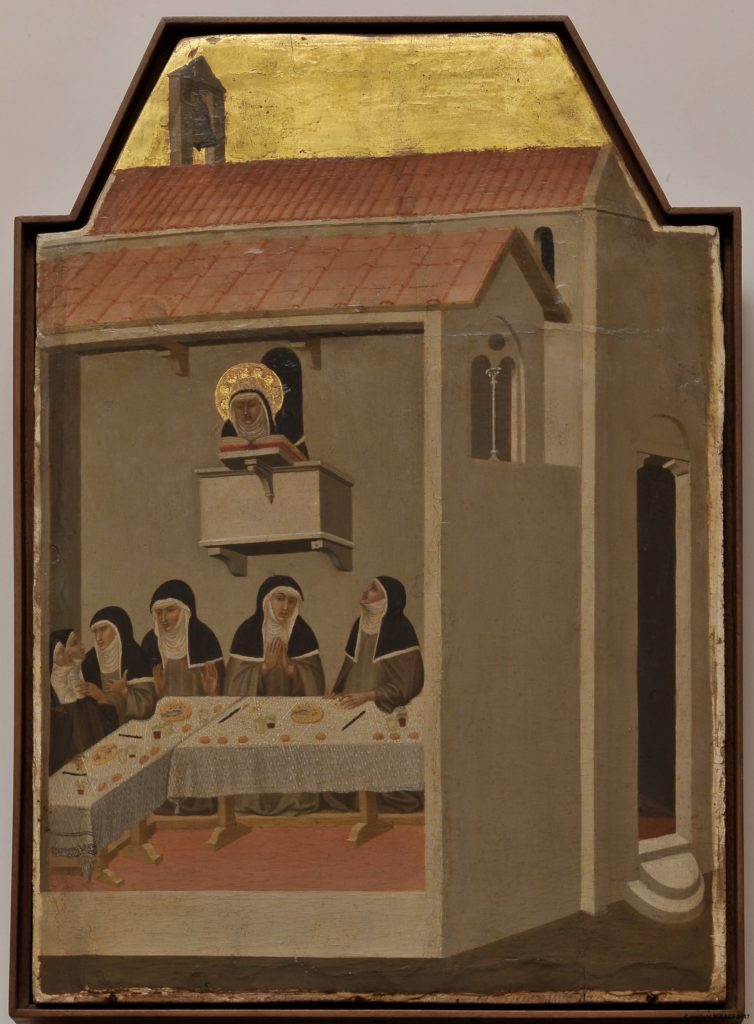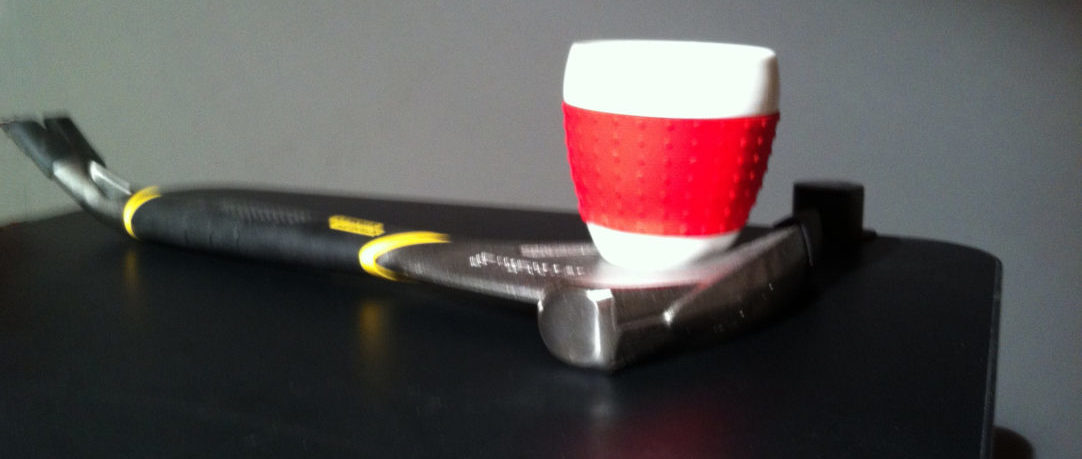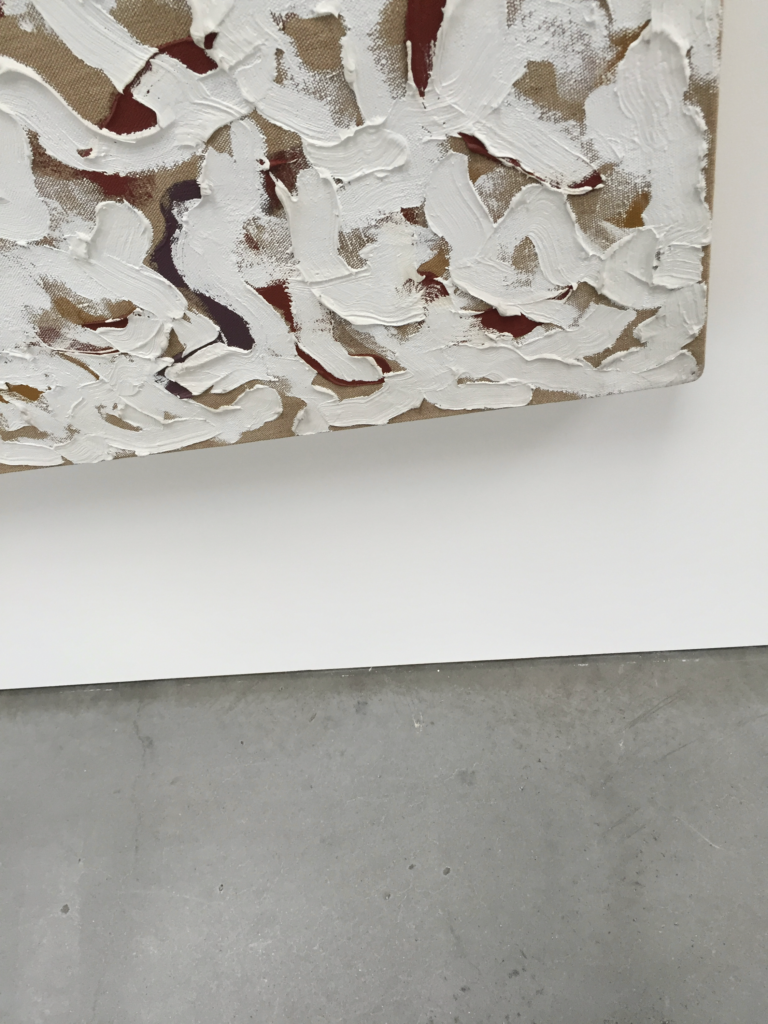The Difficulties of “Online Art Exhibits”
Note: In this post I’m discussing viewing art that was not originally intended to be viewed online, e.g., paintings, sculptures, etc. that were created to be viewed in person. Deficiencies encountered when viewing artwork online that was intended to be viewed online are deficiencies of the artwork’s conception or execution rather than the medium itself (aka one doesn’t blame the paint for a bad painting)
The Gallerie Uffizi Hypervisions site is what prompted this post. Exquisite work, Exquisitely lit and Exquisitely shot, with very well done UI (seems to be by LeanPanda — pretty robust, even when I poked at it a bit)
But why does this site work so well? Let’s look at one detail (from here)

If you zoom in, you can see that exquisitely lit/exquisitely shot is an understatement. It’s not a huge image (1842×2500 pixels) but allows additional browser zooming (beyond the 🔍) that seems close to what you’d see if you were looking at it in person. A “spot” lighting angle was picked that allows part of the gold background to pop capturing the life that this style of painting demonstrates when seen in person. There is an additional factor the work that exposes a precondition to the online experience’s success: the relative flatness of the painting means that a single angle will suffice to convey the experience.
Zooming out you can see that placement of the light is a compromise which emphasizes the radiance of the main image (even though the radiance seems a bit excessive in the online capture) while nicely highlighting the detail. This is a lighting I often see in installations since museums generally eschew any softbox adjacent lighting modifications.

The detail views mimic one’s eye tracking of a piece. I don’t think this would exactly mimic my eye tracking, but it’s plausible, immanent, and visually engaging rather than simply being a linear didactic exhibition.
I can’t help but say, yet again, how well done this site is. I’ll definitely visit when leisure international travel again becomes a thing.
Having praised the presentation of this individual painting, I will note that the overall Hypervision presentations are solid, but could definitely be improved. After looking at the excellent presentation of the painting I’m left wanting more. Something similar to The Death of General Wolfe presentation would be nice here, but probably not possible on the museum’s budget.
In mentioning The Death of General Wolfe, I don’t mean to conflate its purpose with the Uffizi’s. I take the Uffizi’s goal to convey the experience of the art, while The Myth of North America, in One Painting by Jason Farago which brilliantly addresses the art historical/cultural references in Benjamin West’s 1770 painting “The Death of General Wolfe,”
The museum also provides a Matterport visit I’ve seen a couple Matterport presentations and while I appreciate the goals of Matterport and do think it’s the only practical way to do this kind of whole gallery view, the dynamic range of optical capture system just isn’t wide enough for it to be satisfying. I assume in X years it will be fine, but don’t know if X is fractional (months) or decades.
Returning to the Humility piece, aside from the design skills what are the preconditions of the work that allowed that allowed this success
- The size of the piece (257 x 168 cm) although not small is not so large that it can’t reasonably be represented on a computer screen (a 15” laptop screen subtends an angle roughly equivalent to something about 140 cm wide at a conventional museum viewing distance)
- I find that when pieces get much bigger than this a large part of their impact comes from the piece usurping your entire field of view — so at a minimum you need a big display, or alternatively a Virtual Reality (VR) headset.
- There is no movement within the piece, e.g., video, mechanical kinetics
- The dynamic range/colorspace of the piece doesn’t appear to exceed that of a .png file. The caveat being that I haven’t seen the piece in person. I’d be surprised if it didn’t look different in person, but the appearance is very credible given similar paintings that I have seen in person.
- The piece doesn’t require any physical movement on the part of the viewer..This is a combination of the piece being flat/not having much texture and not having small details that must be seen close up to appreciate the piece.
- Obviously this is a matter of degree, you can show some small scale via zooming-in/detailed views, but there’s a definite limit and it doesn’t allow for much
- No difficult sensory modes
- Sound
- Very limited, unless you go for a VR experience
- Sound
- No unavailable sensory modes
- Touch
- Only with specialized controllers, very limited
- Smell
- Sadly, nothing like smelling a fresh oil painting, and also if the smell is part of the piece, you’re just stuck (thinking of Claim (Whitney Version) by Pope.L)
- Taste
- I’m unaware of any flavor output devices that can be computer controlled in general flavor/taste is under explored in visual arts.
- Touch
The Pope.L piece is good example of something that can’t fully be presented electronically via any technology of which I am aware since the smell of rotting bologna would be missing! That smell was a substantial part of the experience when I visited it (and set a hard limit on the amount of time you could spend inside the room)
OK, so even if we only consider those works for which a computer (by which I mean a 2020 vintage good quality generic “laptop”) should be capable of providing you with the information (in the “bit” information theoretic sense) required to present the artwork most experiences are still unsatisfying. This comes down to two things both of which are centered movement: one is the inability to move around a piece. the other is the cognitive burden of moving between pieces.
I’ve been attuned to this lately since I’ve done some work in the Unity3d Virtual Reality environment with a good headset (which still doesn’t have the visual dynamic range of a good laptop). In VR it is inherently simple to move around a piece and allow differences in lighting angle to limn the surface, affording a palpable appreciation of its materiality. This isn’t only true for sculptures, but also for paintings especially those that have a lot of brushwork. Of course, this requires that the lighting has to be non-uniform and render with some shadows, so that the shadows can move as you change your point of view. Straight, head on, shadow free lighting does’t do it, and static shadows, albeit better, aren’t the same.
Ideally you’d have a dynamically lit 3D model with a resolution at the scale of a visible brush mark (so smaller than the brush, but usually larger than the bristle) — so unexpectedly (at least for me, I’m thinking this through as I’m writing) the resolution and computational lift required for a small van Gough are likely larger than that for a medium sized (for him) Richard Serra.
These detail images from a Robert Ryman painting show at Dia Chelsea in 2016 are a good example of think kind of paintings I’m thinking of and it’s useful to contrast them with with MOMA Starry Night effort.
The massive pixel density of the recently announced 3D MOMA/Google Starry Night effort makes a very solid effort in that direction (resolution that MOMA used “(3 µm)—less than half the width of a human blood cell” is, shall we say, more than adequate to capture the necessary detail),
The MOMA 3d model definitely gives a better sense of what’s going on with the van Gogh. The image below is a screenshot of a portion of the MOMA 3d model (I do find the lighting a bit flat, but I almost always find the lighting a bit flat).

The other component of movement is moving between pieces. When in a gallery (or even at an art fair 😱😢 (the pre pandemic & post pandemic art fair emojis)) one moves to a new piece or move to the next segment. The movement is walking (or equivalent),which we not only perform all the time but is an extremely natural thing to do after standing. The transitions required most art websites aren’t anything like that (I’ll elide the long list of well-known deficiencies). I thought I’d highlight the best UI I’ve seen on this and it’s Flickr. Flickr still exists and has been upgraded. The experience provided on the iPad app the best, but all platforms are similar and conceptually sound: vertical scrolling between topics, horizontal scrolling within a topic, high resolution images with unrestricted aspect ratios, much to recommend. I’m a member/user bounce between pro and free accounts not otherwise affiliated. Just seems like they’ve concentrated on having a good image experience for a long time and it shows.



Leave a Reply